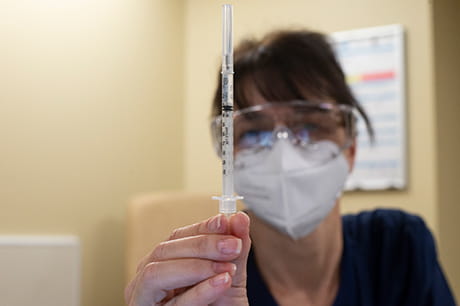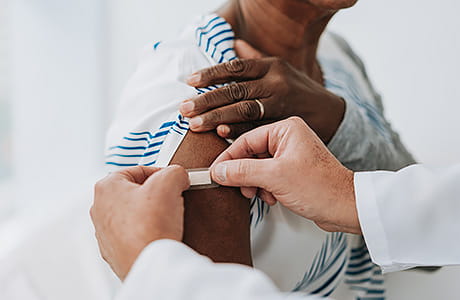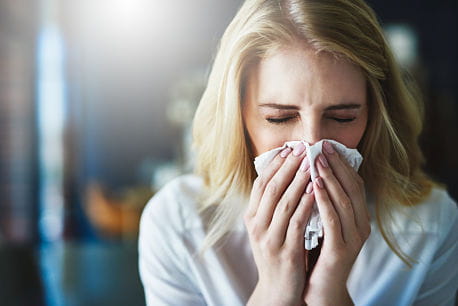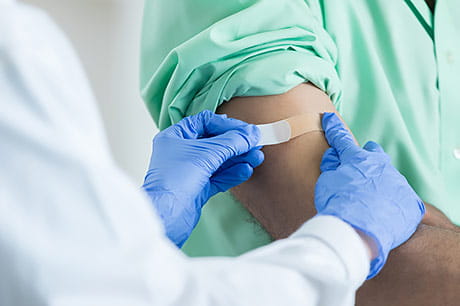Is the COVID-19 vaccine safe?
,
Some are ready to get the COVID vaccine as soon as possible, while others are concerned about its safety. An infectious diseases specialist weighs in.
Vaccines provide us with protection against potentially deadly diseases like polio, tetanus and measles. In fact, vaccines have nearly eliminated these diseases — saving millions of lives each year.
But over the years, vaccine misinformation has spread. And vaccination rates have dropped.
“Misinformation about vaccine safety has led to a decrease in adults and children being vaccinated,” says Dr. Stanley Martin, system director of infectious diseases at Geisinger. “This has caused a revival of certain diseases that were once virtually eliminated in the United States, such as measles.”
Despite these myths, research has shown that vaccines are safe and crucial in the fight against serious, even deadly, infectious diseases.
Enter the COVID-19 pandemic — and the highly anticipated vaccine that can help us control it.
Many are asking: Is the COVID-19 vaccine safe?
With a COVID-19 vaccine now approved through an emergency use authorization (or EUA, for short) by the Food and Drug Administration, some people are nervous about how quickly it’s been developed.
While it’s true that the vaccine was developed quickly, it doesn’t mean that important steps were skipped.
“During Phase 3 clinical trials, more than 40,000 people safely received the COVID-19 vaccine,” says Dr. Martin. “And those participants were followed for an average of 2 months to monitor any potential side effects. So far, results are promising.”
But how was the vaccine developed so quickly?
“What many aren’t aware of is that the technology used to develop the COVID-19 vaccine has been in the works for many years — long before the COVID-19 pandemic,” explains Dr. Martin.
In fact, this work began after earlier coronavirus outbreaks, like the severe acute respiratory syndrome (SARS) outbreak in 2003. This allowed for the vaccine to be developed much more quickly than others in the past.
“The FDA has certain criteria for vaccine development in place to ensure that all vaccines are as safe as possible,” says Dr. Martin. “They didn’t compromise those criteria here — and the findings to date give us (at Geisinger) confidence in its safety and effectiveness.”
What are the side effects of the COVID-19 vaccine?
While experts continue to study the long-term effects of the COVID-19 vaccine, early research hasn’t presented cause for concern.
“The majority of serious side effects from vaccines typically occur in the first six weeks,” explains Dr. Martin. “The medical community feels confident that the significant findings have been captured during the studies to date.”
Administered in two separate doses, the COVID-19 vaccine commonly causes mild pain and redness at the injection site, headache, muscle aches, low-grade fever, nausea and malaise (feeling unwell).
“Similar to the symptoms felt after getting a flu shot, these are all signs that your immune system is responding correctly to the vaccine,” says Dr. Martin. “The second dose is more likely to produce side effects than the first, but they typically resolve within 24 to 48 hours.”
When can I get the COVID-19 vaccine?
First, let’s take a look at what “emergency use authorization” means. Like FDA approval, an EUA means that a drug or vaccine is effective based on substantial evidence and that its benefits outweigh any risks. The difference is that it’s approved for use during a public health emergency, like the COVID-19 pandemic.
“Even though we have this authorization, there aren’t enough vaccines for everyone right now,” says Dr. Martin. “Following the Pennsylvania Department of Health and CDC guidelines, Geisinger (like other healthcare providers) will distribute the vaccine in phases.”
Healthcare professionals who work with patients who have COVID-19 — in close proximity and on a regular basis — will be vaccinated first. People considered high-risk due to age or medical conditions will also be a high priority as more vaccine becomes available. Don’t fit into one of these groups? Don’t worry. As more supplies arrive, the vaccine will be made available to everyone in the coming months.
In the meantime, while the vaccine offers hope, the COVID-19 pandemic isn’t over. “Everyone should continue taking preventive measures like masking, physical distancing and handwashing — even if you get the vaccine,” adds Dr. Martin.
Next steps:
Content from General Links with modal content





